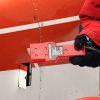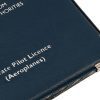What is a Private Pilot’s Licence (PPL)?
- A PPL allows you to fly a private aircraft for non-commercial purposes.
What are the age requirements for obtaining a PPL?
- You must be at least 17 years old to hold a PPL.
Do I need any previous experience before starting PPL training?
- No previous flying experience is required.
What medical certificate do I need for a PPL?
- You need a Class 2 medical certificate.
Where can I get a Class 2 medical certificate?
- From an Aviation Medical Examiner (AME).
What are the basic physical requirements for the medical certificate?
- Good overall health, including vision and hearing standards.
How many flight hours are required to obtain a PPL?
- A minimum of 45 flight hours, including 10 solo hours and 5 solo cross-country hours.
What types of aircraft can I fly with a PPL?
- Single-engine piston aircraft.
Can I add ratings to my PPL?
- Yes, such as night rating, instrument rating, or multi-engine rating.
What written exams are required for a PPL?
- There are nine theoretical knowledge exams.
What subjects are covered in the theoretical knowledge exams?
- Air Law, Operational Procedures, Human Performance, Navigation, Meteorology, Aircraft General Knowledge, Principles of Flight, Flight Performance and Planning, and Communications.
How are the written exams conducted?
- The exams are multiple-choice and can be taken at approved centres.
What practical skills test is required for a PPL?
- A skills test with an examiner, covering navigation and general handling.
How long is the PPL course typically?
- It varies, but usually takes 6-12 months part-time.
What are the costs associated with obtaining a PPL?
- Costs vary, typically ranging from £8,000 to £15,000.
Is there any financial assistance or scholarships available for PPL training?
- Some scholarships and bursaries are available from various aviation organizations.
Can I split my training between different flight schools?
- Yes, but coordination is required to ensure all requirements are met.
What is the validity period of a PPL?
- Lifetime, but the medical certificate and ratings need periodic renewal.
How often do I need to renew my medical certificate?
- Every 5 years if you are under 40, and every 2 years if you are over 40.
Do I need a radio licence to use aircraft radios?
- Yes, a Flight Radiotelephony Operator’s Licence (FRTOL) is required.
What is involved in the radiotelephony exam?
- Both written and practical tests.
Can I fly internationally with a UK PPL?
- Yes, within the regulations of the destination country.
Can I take passengers with a PPL?
- Yes, but you cannot charge them for the flight.
Are there any restrictions on carrying passengers?
- No restrictions on number of passengers, subject to aircraft limitations.
Can I fly at night with a PPL?
- Only if you have a night rating.
What is involved in obtaining a night rating?
- Additional training, including 5 hours of night flying.
Can I fly in poor weather with a PPL?
- Only if you have an Instrument Rating (IR).
What is involved in obtaining an Instrument Rating?
- Additional theoretical knowledge and practical training, including a skills test.
Can I fly multi-engine aircraft with a PPL?
- Only if you have a multi-engine rating.
What is involved in obtaining a multi-engine rating?
- Additional training and a skills test.
Can I become a flight instructor with a PPL?
- No, you need a Commercial Pilot’s Licence (CPL) and instructor rating.
Can I convert my UK PPL to an EASA PPL?
- Yes, but you may need to meet additional requirements.
Is a UK PPL recognized worldwide?
- Generally, yes, but check specific country regulations.
How do I log my flight hours?
What information must be recorded in a logbook?
- Date, flight time, type of aircraft, registration, and details of the flight.
Can I fly different types of single-engine aircraft with a PPL?
- Yes, once differences training is completed if necessary.
What is differences training?
- Training to operate aircraft with different systems (e.g., retractable gear, variable-pitch propeller).
Can I rent aircraft with a PPL?
- Yes, from flight schools and flying clubs.
Do I need insurance to fly an aircraft?
- Yes, third-party liability insurance is mandatory.
How do I stay current as a PPL holder?
- Regular flying and completing proficiency checks as required.
What is a proficiency check?
- A periodic flight review with an instructor.
How often are proficiency checks required?
Can I take a break from flying and resume later?
- Yes, but you may need refresher training.
What is the difference between a PPL and a Light Aircraft Pilot Licence (LAPL)?
- LAPL has less stringent requirements and limitations compared to PPL.
Can I upgrade from an LAPL to a PPL?
- Yes, with additional training and flight hours.
What is the minimum visibility required for VFR flight?
- Generally, 3 statute miles.
What is VFR?
- Visual Flight Rules, where flight visibility and cloud clearance requirements are met.
Can I fly in controlled airspace with a PPL?
- Yes, with appropriate clearances.
Do I need to file a flight plan for every flight?
- Not for all flights, but required for some types of airspace and international flights.
What are NOTAMs?
- Notices to Airmen, providing important flight information.
How do I check NOTAMs?
- Via the NATS AIS website or other approved sources.
What is the purpose of a pre-flight checklist?
- To ensure all necessary checks are completed before flight.
What is included in a pre-flight inspection?
- Checking the aircraft’s exterior, interior, and systems.
What are the fuel requirements for VFR flight?
- Enough fuel to reach the destination plus 30 minutes reserve during the day, 45 minutes at night.
Can I fly aerobatics with a PPL?
- Yes, with appropriate training and an aerobatic rating.
What is required for an aerobatic rating?
- Specific training and a flight test.
Can I fly seaplanes with a PPL?
- Yes, with seaplane rating training and certification.
What is a type rating?
- Certification to fly a specific aircraft type that requires additional training.
What are the currency requirements for carrying passengers?
- Three take-offs and landings in the preceding 90 days.
Can I fly a tailwheel aircraft with a PPL?
- Yes, with tailwheel differences training.
What are the privileges of a PPL holder?
- Fly as pilot-in-command for non-commercial purposes.
Can I use a PPL for aerial work?
- Only if it is incidental to your primary business and not for hire or reward.
What is a safety pilot?
- A qualified pilot who assists with maintaining visual lookout during simulated instrument flight.
Can a PPL holder act as a safety pilot?
- Yes, if they hold a valid medical certificate.
What is the maximum take-off weight for aircraft I can fly with a PPL?
- Typically up to 5,700 kg.
What is involved in a flight review?
- Review of theoretical knowledge and a flight test.
How often do I need to complete a flight review?
Can I fly a helicopter with a PPL?
- No, you need a separate helicopter licence.
What is a ground school?
- Theoretical knowledge training required for the PPL.
Do I need ground school before flight training?
- It can be done concurrently, but some subjects are beneficial to complete first.
What is a cross-country flight?
- A flight that involves landing at an airport other than the departure airport.
What is required for a solo cross-country flight?
- Endorsement from an instructor after satisfactory training.
Can I fly formation with a PPL?
- Yes, with appropriate training.
What are the basic requirements for night VFR?
- A night rating and compliance with night VFR rules.
Can I fly in Class A airspace with a PPL?
- No, unless you have an instrument rating.
What is the maximum altitude I can fly with a PPL?
- Up to 19,000 feet without supplemental oxygen.
Do I need to carry my licence when flying?
- Yes, along with medical certificate and photo ID.
Can I fly a glider with a PPL?
- No, you need a separate glider pilot licence.
What is airspace classification?
- Categorization of airspace based on flight rules and requirements.
Can I fly in restricted airspace with a PPL?
- Only with prior permission.
What is a transponder, and do I need one?
- A device that transmits aircraft position; required in controlled airspace.
What is Mode C and Mode S transponder?
- Mode C transmits altitude information; Mode S includes aircraft identification.
Do I need to file a flight plan for VFR flights?
- Not usually, but recommended for cross-country and international flights.
Can I fly in controlled airspace without a radio?
- No, you must have two-way radio communication.
What is the minimum height for flying over congested areas?
- 1,000 feet above the highest obstacle within 600 meters.
What is the minimum height for flying over open areas?
- 500 feet above the ground.
What is an airworthiness certificate?
- A certificate confirming the aircraft is fit to fly.
Do I need an airworthiness certificate for my aircraft?
- Yes, it must be current and valid.
How often does an aircraft need to be inspected?
- Annually or every 100 flight hours, whichever comes first.
Can I perform maintenance on my own aircraft?
- Some minor maintenance tasks can be done by the pilot, but major work must be done by a licensed engineer.
What is a maintenance logbook?
- A record of all maintenance performed on the aircraft.
Do I need to log maintenance in the aircraft logbook?
- Yes, all maintenance must be documented.
What is a service bulletin?
- A notice from the manufacturer regarding maintenance, upgrades, or safety information.
What is an Airworthiness Directive (AD)?
- A mandatory instruction from aviation authorities to correct unsafe conditions.
Do I need to comply with Airworthiness Directives?
- Yes, compliance is mandatory.
What is the difference between VFR and IFR?
- VFR is Visual Flight Rules; IFR is Instrument Flight Rules.
Can I fly IFR with a PPL?
- Only if you have an Instrument Rating (IR).
What is an annual check ride?
- A flight review to ensure continued proficiency.
Can I renew my PPL if it expires?
- Yes, but additional training and testing may be required.
What resources are available for PPL study and preparation? – Books, online courses, flight schools, and pilot forums.






